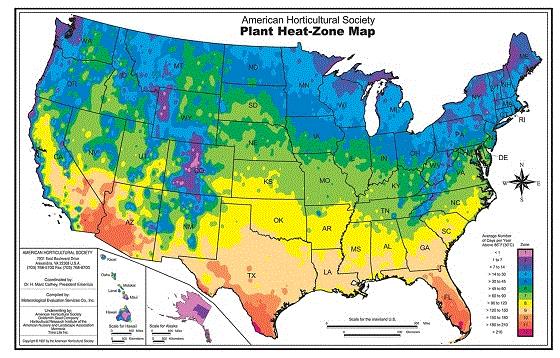Hostas of the Year
I shared several Plants of the Year in a previous newsletter and thought I’d pass along a couple Hostas-of-the-Year selections.
Skywriter
The first hosta of the year is none other than the American Hosta Growers Association’s selection for 2025: Skywriter. Skywriter has beautiful blue ruffled leaves with white undersides on bright purple petioles. The attractive medium-sized clumps grow 15-in. tall by 30-in. across. Lavender flowers atop purple scapes arise in the the summer. Hardy to Zone 3.
Miss America
In conjuction with its National Plant of the Year program, Proven Winners selects and promotes a Hosta of the Year. The 2025 selection is Shadowland Miss America. This American beauty will catch your eye and capture your heart with its stunning beauty. Miss America has green heart-shaped leaves, which appear painted with white centers and light green streaks. This contrast provides a dramatic, yet refined, appearance. This large, vigorous hosta reaches 19-in. tall by 55-in. across with tall 55-in. flower scapes bearing light purple flowers in the summer. Hardy to Zone 3.

AHS Heat Zones

|
I recently recevied an email from a subscriber asking if I could include heat zones along with the cold hardiness zones when featuring new varieties. They're a Southern grower and would find this information helpful. Before I entertain this possibility, let’s explore what heat zones are.
As you already know, USDA Hardiness Zones have become an industy standard when it comes to indicating a plant's ability to survive cold.
|
Cold hardiness zones are very useful, but aren't helpful when determining a plant’s ability to survive at the opposite side of the spectrum—severe heat.
Many perennials don't grow well or survive the extreme heat and humidity of the Southern states. In these locations where extreme cold temperatures seldomly occur, it’s often better to look a plant's ability to tolerate heat rather than cold. The American Horticulture Society developed a Heat Zone Map in 1997.
The heat zone map is based on heat rather than cold to demonstrate a plant’s ability to survive in a specific location. It was orginally developed to complement the USDA Cold Hardiness Map. The zones of the AHS Heat Zone Map are derived from the number of days the temperatures are 86F (30C) or higher.
Why 86F? This temperature is significant because the growth of most plants begins to decrease when the temperature rises above 86F.

A Deeper Look at the Heat Zone Map

The AHS Heat Zone map is divided into 12 zones. Each zone is identified by the average number of "heat days" or days above 86F it experiences in a year. The zones are:
AHS Heat Zone Average
Number of Days Above 86F
|
Zone 1 |
0 |
|
Zone 2 |
1 to 7 |
|
Zone 3 |
8 to 14 |
|
Zone 4 |
15 to 30 |
|
Zone 5 |
31 to 45 |
|
Zone 6 |
46 to 60 |
|
Zone 7 |
61 to 90 |
|
Zone 8 |
91 to 120 |
|
Zone 9 |
121 to 150 |
|
Zone 10 |
151 to 180 |
|
Zone 11 |
181 to 210 |
|
Zone 12 |
> 210 |
The zones are expressed with the highest heat zones listed first, followed by the lowest. For example, the heat zone rating for platycodon is AHS Heat Zone: 8 to 1. This illustrates that platycodon can tolerate and survive the summer heat in Zones 8 through 1. This doesn't necessarily mean that this plant can't tolerate or survive in higher Heat Zones, but it may struggle a bit and may not perform as well as the zones it’s listed in.
A plant’s ability to tolerate heat is often more vague or variable than it’s ability to survive under freezing conditions. Heat causes various stresses that impacts a plants biology. Other stresses such as moisture content, and environmental conditions like wind and duration of the heat, can also influence a plant’s ability to tolerate and/or survive high temperatures. Water is a very critical factor, as plants lacking water for even short durations become more susceptible to injury from heat.
The AHS Heat Zone Map wasn't developed to replace the USDA Hardiness Zone Map, but to complement it, allowing individuals to choose plants based on their ability to survive both temperature extremes in their region. For any given location, first determine the USDA Hardiness Zone and then determine the AHS Heat Zone. Now, using both zone maps, landscapers and homeowners can better select plant varieties suitable to both the winter and summer extremes at their location.

The Challenge of Using Heat Zones
The AHS Heat Zone Map isn't as widely used as the USDA Hardiness Zone Map. Unfortunately, fewer resources are committed to determining a plant's heat zone than to its cold hardiness. Additionally, the AHS Heat Zone Map has never been updated to reflect any changes in climate that may have occurred over time across the country.
Until the industry includes heat zone trialing as a key goal of new introduction trials, it isn't possible to provide accurate heat zone listings for the new perennials being introduced each year. I do have Heat Zone information on a wide range of perennials that I obtained in the late 1990s and early 2000s, but I’m not comfortable making generalizations and publishing Heat Zones on new perennial cultivars when I don’t have actual data to support these claims.
This leads me to a couple of questions for you:
-
The first two questions are for the breeders and companies trialing and introducing new perennials: A) Are you including Heat Zone trials as part of your field trials?; and B) Are you aware of any resources growers and landscapers can refer to that lists Heat Zones for specific perennial cultivars?
-
This is for the rest of you: As I mentioned, I do have AHS Heat Zone information on a number of perennials that were in the industry 20 to 30 years ago. Would you like me to compile this information into a table that can be used as a general reference? Maybe omiting cultivars and listing the Heat Zones on a genus and species level. This would take me some time to compile, but I’d be happy to do it if you’d benefit from it.
Please send me your answers to the above questions at
paul@opelgrowers.com so I can pass along some resources or begin compiling a Heat Zone table.

Young Grower & Young Retailer Awards
With the GRAMMYS earlier this month and the Oscars happening next month, there’s no need for you to feel left out. You can nominate a friend, colleague, coworker, employee or even yourself for the upcoming GrowerTalks' Young Grower Award or Green Profit's Young Retailer Award
The applicants for each of these awesome awards must be under 35 years old as of July 15, 2025 and reside in the U.S. or Canada. The editors of Ball Publishing will select three finalists for each award. The finalists will each get to write guest editorials for the June 2025 issues of GrowerTalks (Young Grower) or Green Profit (Young Retailer), attend Cultivate’25 and attend a special dinner alongside Ball Publishing’s editors, judges and sponsors.
The winners for each of these awards will be announced at AmericanHort’s Unplugged event during Cultivate. Each winner gets a cover story in the September issue of these prospective magazines. Additionally, the winners will get to help select the 2026 winners.
The deadline to submit your nominations is March 1, 2025. To submit a nomination for the Young Grower Award, go
HERE. To submit one for the Young Retailer Award, go
HERE.
Thanks to all of the sponsors (AmericanHort, Ball Horticultural Company, BASF and The Garden Center Group) for making these awards possible!





My email is paul@opelgrowers.com if you have any comments, article suggestions or if you'd just like to say hello.
Best regards,

Paul Pilon
Editor-at-Large—Perennial Pulse
Director of Growing—Opel Growers
This email was received by you and 34,330 other fine subscribers!
If you're interested in advertising in Perennial Pulse, contact Kim Brown ASAP and she'll hook you up.